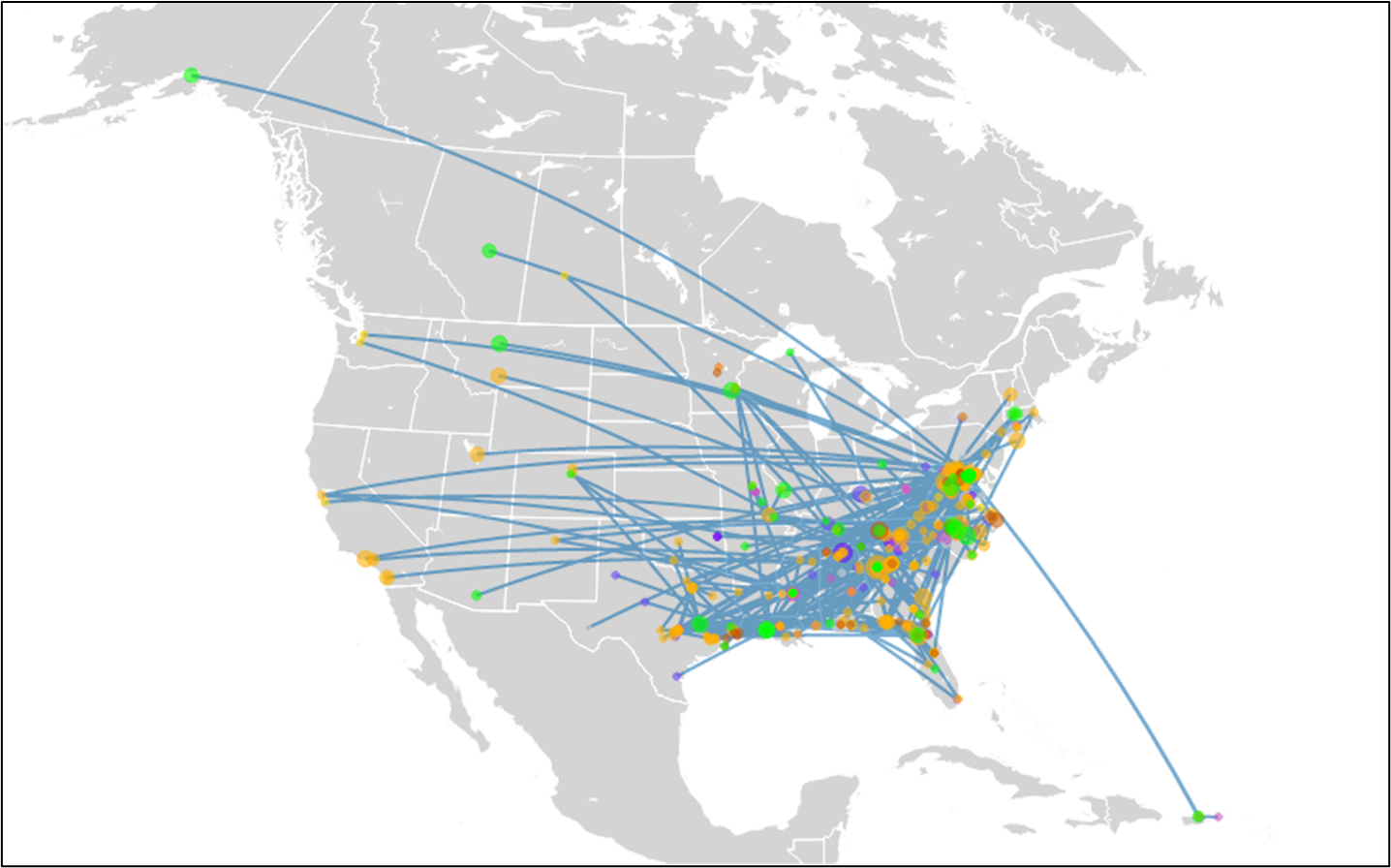Update on the SECAS Social Network Analysis

Where We’ve Been
A few years ago, when I joined the U.S. Fish and Wildlife Service, the first project I was tasked with overseeing and assisting was a social network analysis (SNA) for the Southeast Conservation Adaptation Strategy (SECAS). The 2021 SECAS Futures report recommended conducting this analysis as a tool to increase connections and deepen engagement with other regional forums and partners by helping SECAS better understand existing relationships and connections. I quickly came to learn that the SECAS partnership fills two critical roles across the Southeast region: 1) as a regional forum for collaboration, and 2) as a decision-support hub. Mallory Martin, the previous SECAS coordinator helped to initiate this project with two external collaborators, Dr. Patrick Bixler of the University of Texas at Austin and Shawn Johnson of the University of Montana, who are experts in network analysis and collaborative conservation and governance.
This project and team grew in true collaborative fashion, bringing on Kelly Guilbeau, another Southeast region social scientist, and Dr. Amanda Sesser, the current SECAS coordinator, as well as members from Bixler’s and Johnson’s labs. The final team addition was our Directorate Fellowship Program (DFP) Fellow last summer, Joshua Toran III, a PhD student from the University of Georgia. Check out the SECAS SNA – Part I blog Joshua wrote last year. After a few years of survey development, approvals, and data collection, cleaning, and analysis, we are excited and grateful to finally share the results from this large effort with you all!
Where We Are
We are in the midst of report writing and finishing up some project elements, but we do have some results to share!
-
We had 137 completed surveys (45% response rate) in this study, which helped to identify 560 organizations working in the landscape conservation space.
-
Surprisingly, as you can see in the network map included at the beginning of this article, there were some working relationships identified outside of the Southeast Region footprint, signifying the impressive reach of some of these collaboration efforts.
-
Within the region there were “hotspots” identified in North Carolina, Virginia, Texas, Florida, and Georgia, meaning there was a higher density of organizations there.
-
Of the organizations identified, 47% were nonprofits, while on average, federal agencies have the most network connections.
If you are interested in learning about more results and insights into how these organizations connect on issues and their familiarity with SECAS, we encourage you to attend our SECAS SNA presentation in the upcoming Third Thursday Web Forum on April 18, 2024, at 10 am ET.
Where We’re Going
In the coming months, in addition to the Third Thursday Web Forum, we will be finishing the technical report, which will include all the results and implementation recommendations. We have also started to build an interactive visualization of the network connections that we hope to have ready later this summer. Network analyses are incredibly valuable to demonstrate how organizations are working with others, where networking opportunities exist, and how resource sharing and information flows across these networks. They are even more powerful when they are applied across time to see how interventions impact the strength of existing ties and cultivation of new ties. To that end, the SECAS team plans to integrate these results to turn them into actionable steps to build a stronger connection between social capacity and identified priority areas for conservation. We also intend to investigate the network again in the coming years to evaluate how the ties are building and growing across time and space.
Stay tuned to see how this project moves from concept to application in our collaborative conservation space. Until then, we wish you all the best in your conservation efforts!